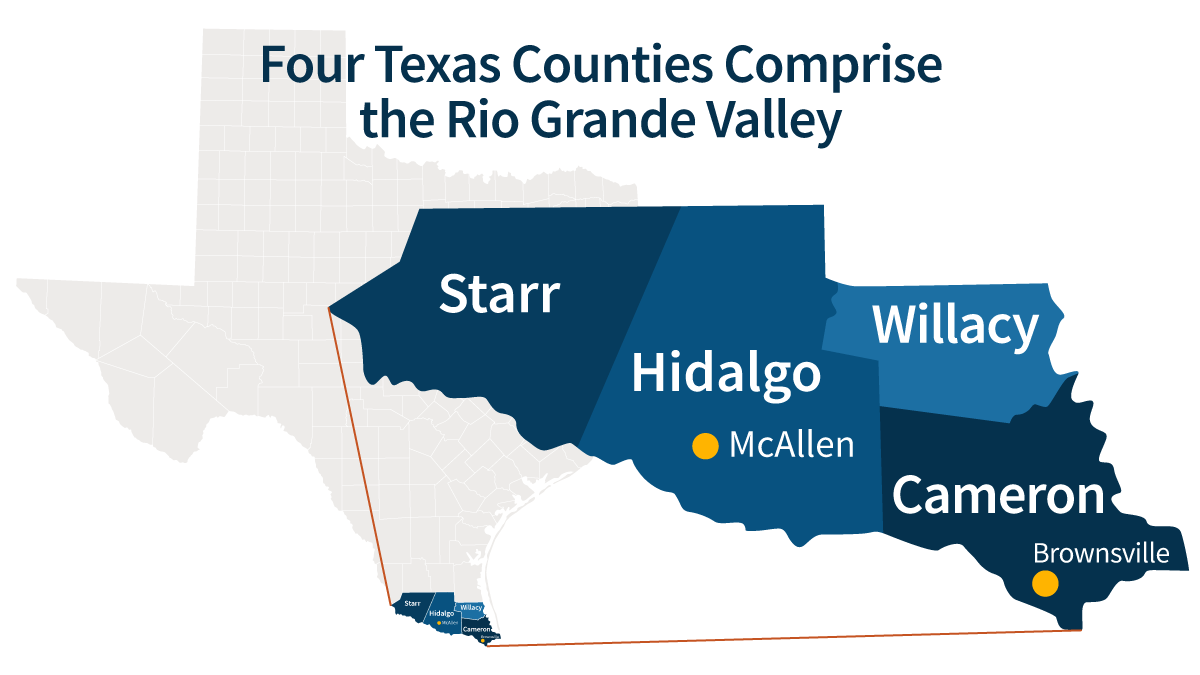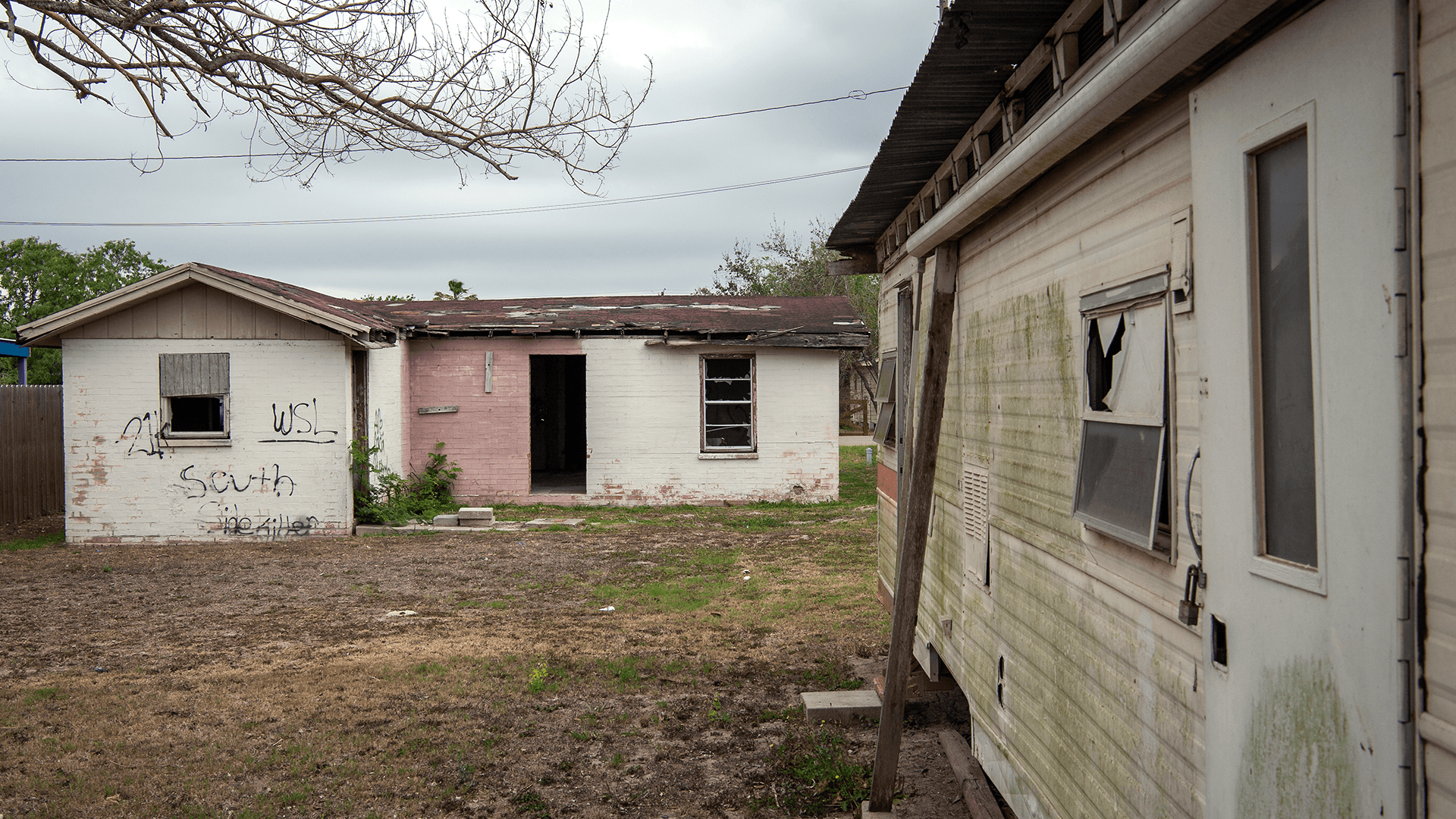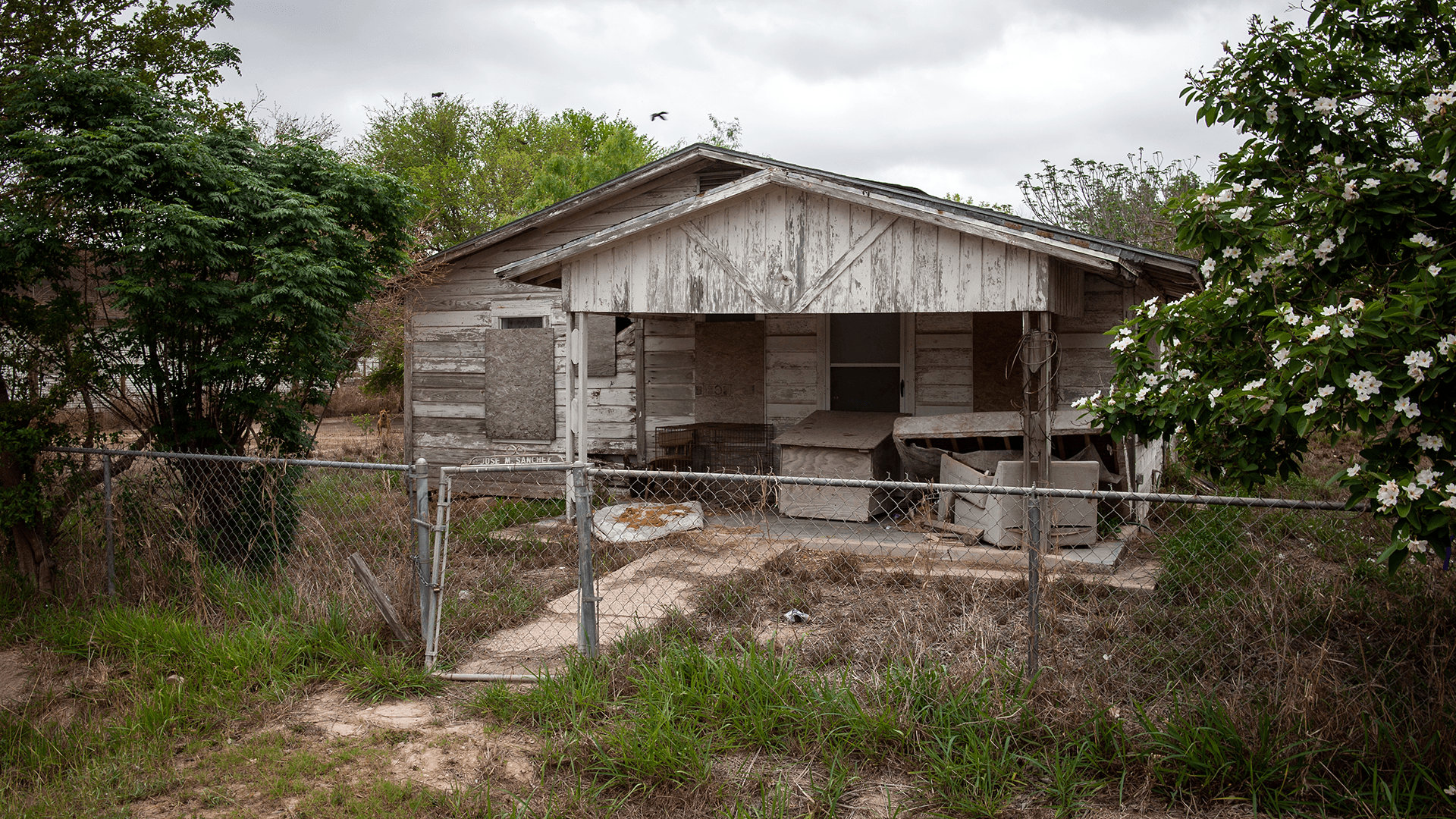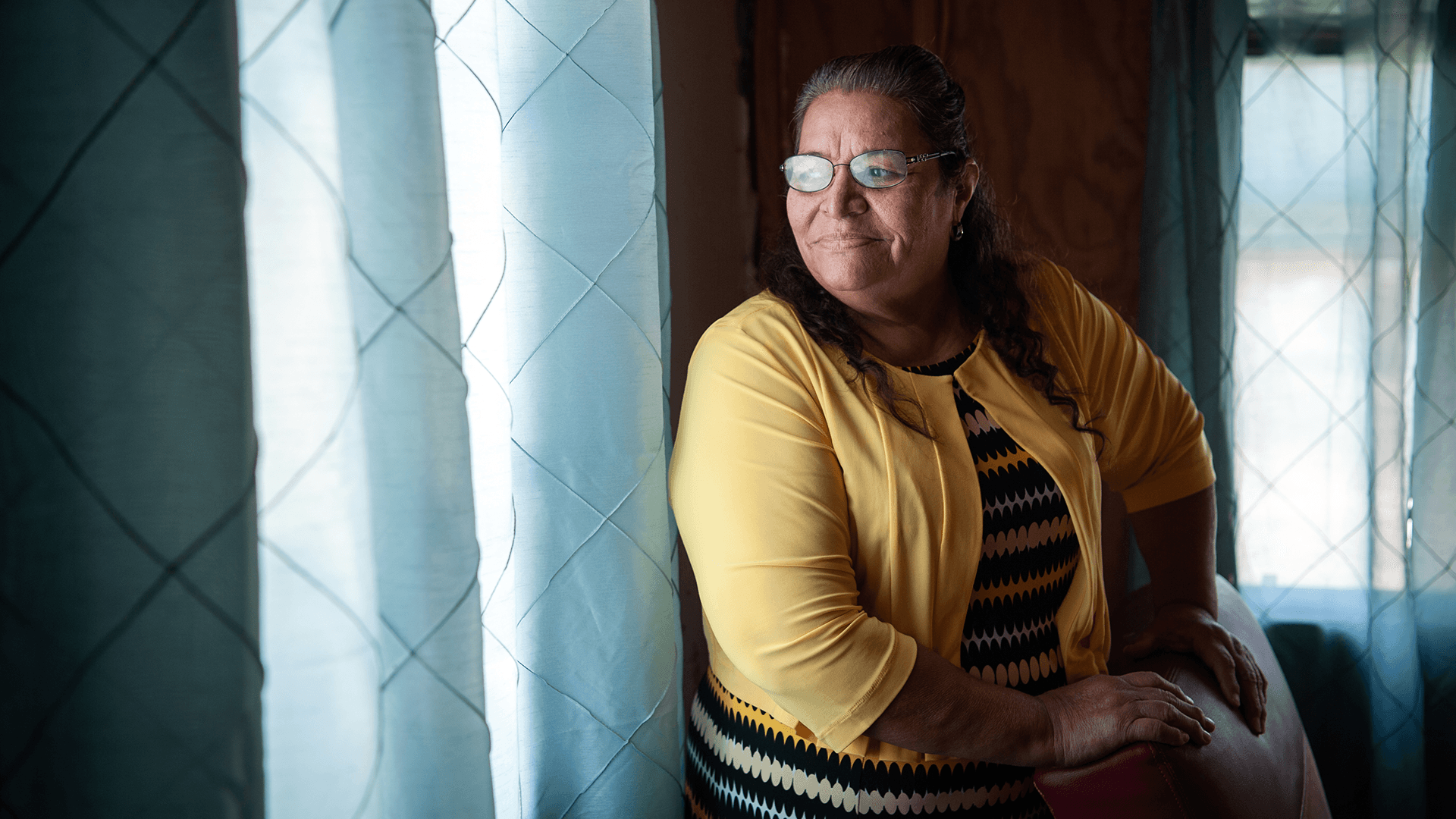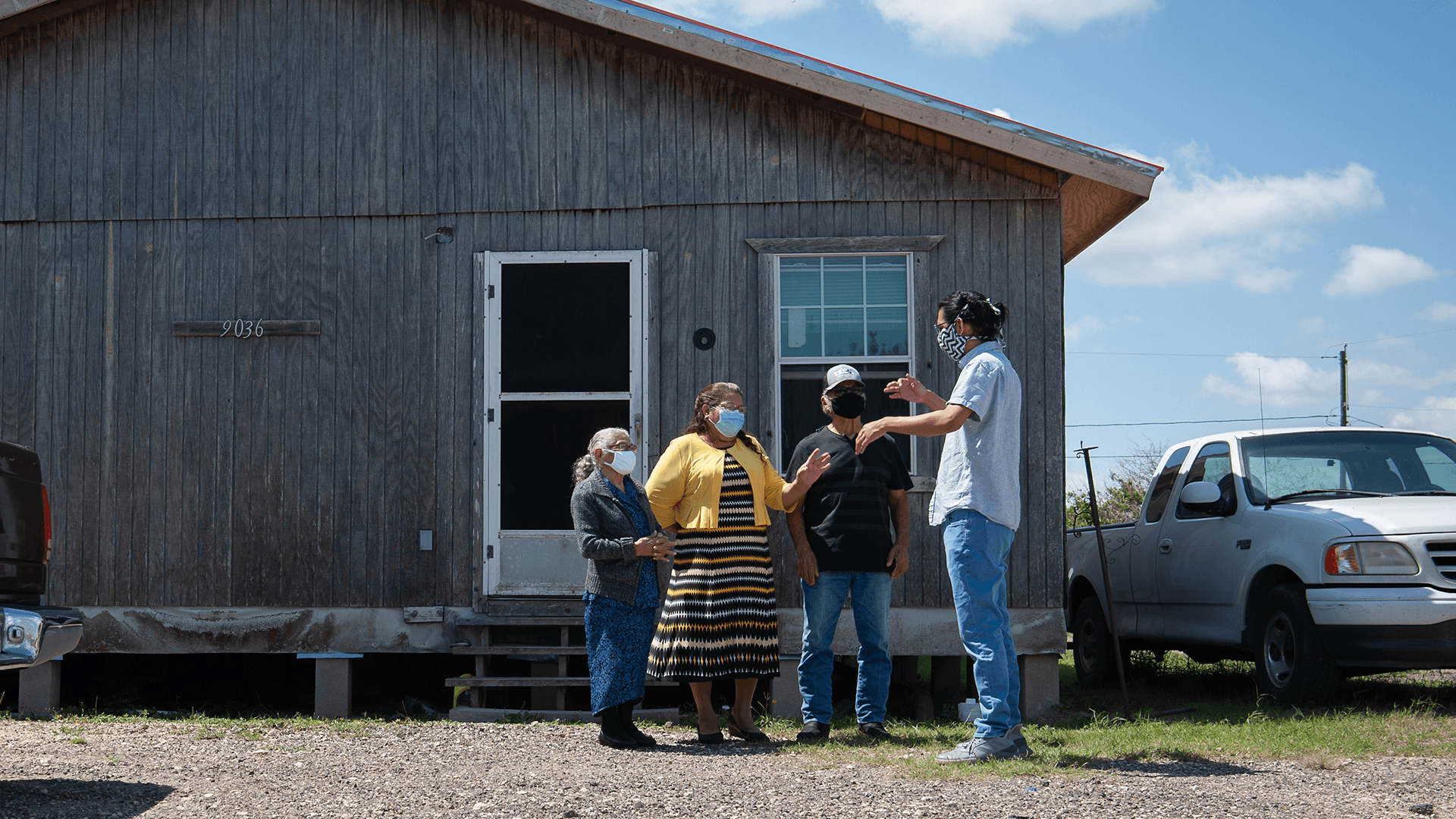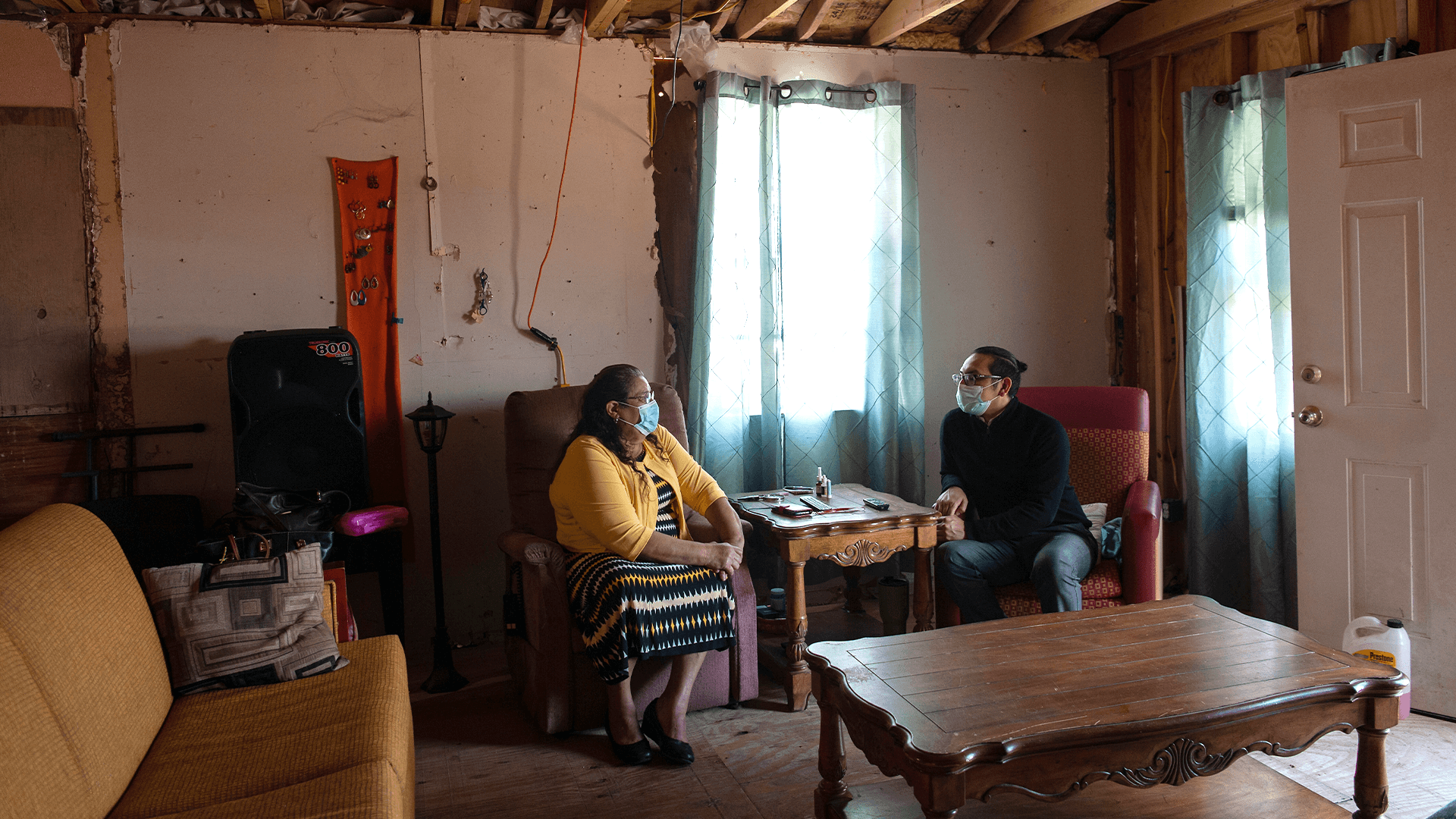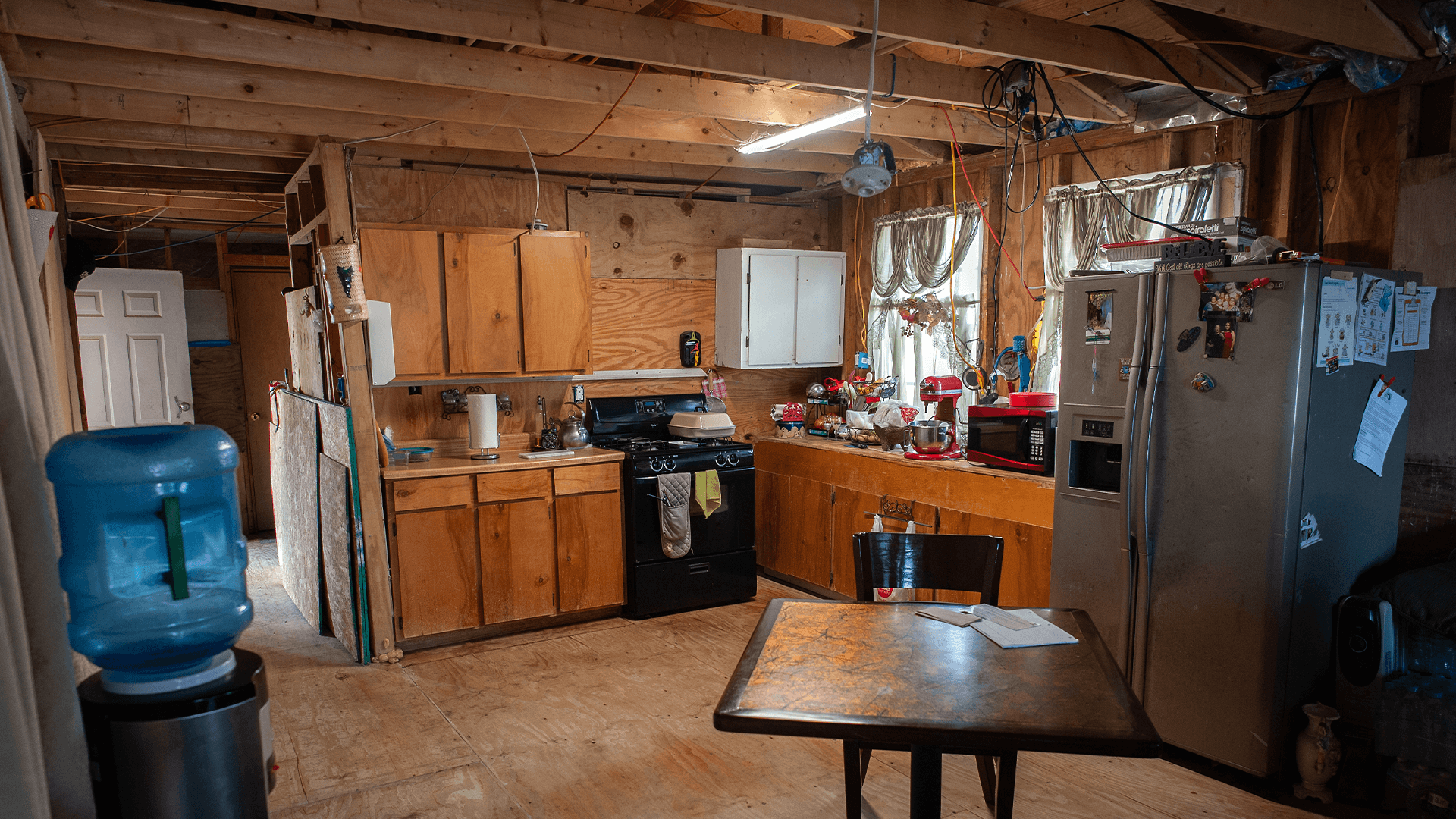Housing & Dreams Delayed
With more than 2.8 million COVID-19 cases, Texas has the second highest total number of cases in the U.S. and the communities in the state’s Rio Grande Valley (RGV) have been hit particularly hard. The largely Latino population living in the RGV has experienced a staggeringly high number of COVID-19 fatalities per capita that puts into undeniable terms the disproportionate effects of the COVID-19 pandemic on low-income communities of color. The subsequent economic downturn has affected the region unevenly – creating a boom for some and a bust for others. At one end of the spectrum, low-wage earners considered essential who remained healthy have seen their incomes rise as their work hours increased, enabling some to save money during this period. At the other end, low-wage earners in sectors severely harmed by the pandemic and local restrictions have struggled to pay their bills when parts of the economy shut down and unemployment benefits expired.
As housing counselors at the Brownsville, TX-based non-profit “Come Dream. Come Build” (CDCB) can attest, the pandemic has upended the lives of many of their clients like Elena Sanchez, hampering the dream of homeownership. These are the some of the tough housing challenges Fannie Mae seeks to address in partnership with organizations like CDCB to help ensure that dreams delayed are not denied.
Come Dream. Come Build. – Turning Low-Income Residents into Homeowners
The pandemic layered on another strain for low-income people in high-needs, underserved markets wanting to buy a home. This was the case for Elena Sanchez of Brownsville who always knew she wanted to own a home. In fact, she and her husband began building a house in Mexico before moving to the U.S. nearly eight years ago. Initially, they lived with their two sons in a single room. They later moved into a trailer, giving them more space, but Elena knew it was not a suitable home for her family which had grown to five people after welcoming a baby girl. “I knew I would not be at peace until after I purchased a home of my own,” Elena says.
When Elena’s sister purchased a home, she urged Elena to contact the organization that helped her, CDCB, a local mainstay in community development for 47 years. Elena eventually enrolled in CDCB’s housing counseling program in 2019 and was laser-focused on buying a home, but her plans were thrown into question when the pandemic struck.
Low-income residents in underserved markets like Elena who aspire to become homeowners often face significant challenges navigating the home purchase process, and the pandemic has made things that much harder. Organizations like CDCB provide much-needed assistance to residents across the RGV. Through their high-touch, one-on-one housing counseling program, CDCB staff develop empathetic relationships with clients as they build their financial capabilities and prepare them to realize their dream of homeownership.
When their offices closed last March, the CDCB team quickly reimagined the delivery of their core business services in a virtual setting. The transition to a technology-based environment was not easy for clients like Elena who had become accustomed to meeting with her CDCB counselor in person. “I had to learn to embrace technology to continue working toward my goal,” she says.
Other near-term effects of the pandemic – government office closures, construction site restrictions and supply chain disruptions – meant construction of Elena’s home was going to take longer than planned. The delayed schedule forced the family of five to continue living in their trailer. This became increasingly difficult with schools and daycares closed, keeping her kids ages 17, 14 and 4 at home all day while she and her husband went to work.
Frustrated by months of delays and anxious to move, Elena knew she could not let the setbacks deter her. She recalls saying to her children, “The day we move from this trailer will be because we are moving to a house that’s ours. And that’s what we did.” After a nearly six-month delay, the family finally moved into their new home in February 2021. Elena is proud of what she has accomplished. “It’s not a big house or a fancy house, but it is my house.”
Elena’s story illustrates the many challenges families across the Rio Grande Valley face when trying to secure safe, stable housing. The stark issues of crowded living spaces, no access to electricity, or inadequate water and sewer systems that have defined the region for decades have only intensified during the pandemic.
Fannie Mae’s Commitment to Affordable Housing
In January 2020, Fannie Mae announced that CDCB was one of the organizations receiving a fee-for-service contract award in its Sustainable Communities Innovation Challenge, a two-year open competition that sought to increase access to affordable housing by spurring innovative ideas to improve the quality of housing, expand access to credit, and increase the supply of affordable housing.
Fannie Mae’s support of CDCB has enabled them to imbed their services with three local employers, integrating their financial and physical health and wealth approach with their financial capability services, and later delivering an app that will enable clients to monitor their progress. Technology-based solutions, including greater social media presence and video communications platforms, have helped CDCB ensure the program expansion was successful and the target client groups were engaged even during the pandemic. Consequently, new clients from this program have grown, including five clients who achieved homebuyer ready status – one of whom recently purchased a home and one who has a house under contract.
The COVID-19 pandemic has brought into plain sight the many disparities that exist in our society, particularly for low-income households and communities of color as they seek safe, stable affordable housing. Through efforts like the Sustainable Communities Initiative and Duty to Serve, Fannie Mae is demonstrating its long-standing commitment to making a difference by executing in the areas we are best suited and by working with partners like CDCB who are equally committed to supporting equitable and affordable housing solutions.
Editor’s note: This is the third of a series of articles from Fannie Mae examining the critical elements of sustainable communities in times of crisis and recovery. Read the first article in the series: Housing & Partnerships, and the second article, Housing & Home.



